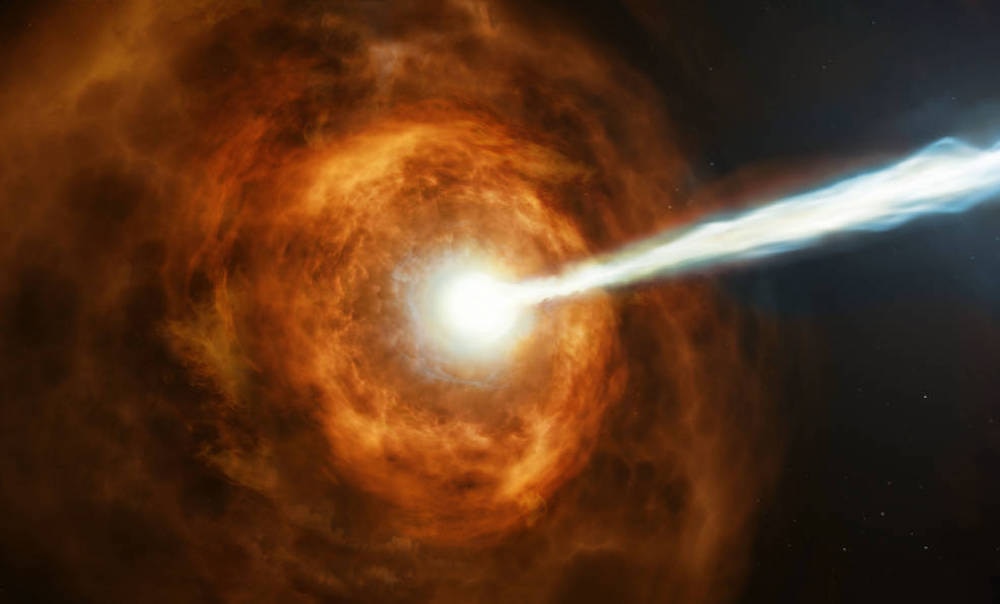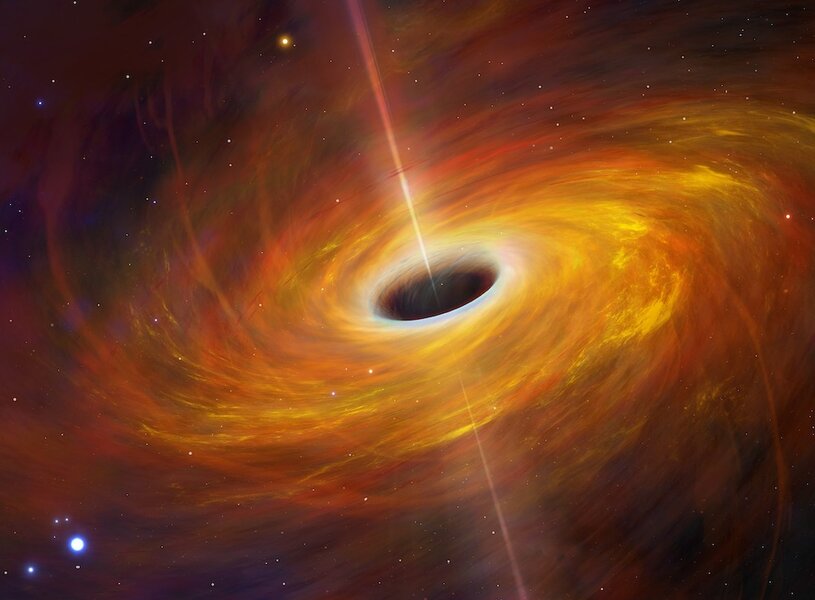Create a free profile to get unlimited access to exclusive videos, sweepstakes, and more!
Earth Hit by Gamma Ray Burst from a Blob at the Center of the Milky Way
The space around black holes can get pretty extreme.

Pulse (streaming now on Peacock) is a 2001 techno-horror involving a mysterious electromagnetic force which unleashes a wave of spirits all over the world. The emergence and evolution of electronic technology has opened our eyes to a host of phenomena which we previously couldn’t see. Like the ghosts of Pulse, our machines provide a window into the otherwise hidden parts of reality. For the last couple of years, astronomers have been detecting regular pulses coming from near the black hole at the center of the Milky Way, and now we might have an explanation. As far as we can tell, there are no ghosts involved.
Mysterious Gamma and X-Ray Pulses from the Center of Our Galaxy
Back in 2021, astronomers first detected a couple of unexplained pulses which appeared to be coming out of the Sagittarius A* (Sgr A*, pronounced Sagittarius A Star), the black hole at the center of our galaxy. Astronomers knew that they couldn’t actually be coming from Sgr A* because black holes don’t release stuff. That’s kind of their whole deal. Instead, they suspected the pulses must be coming from gas, dust, or other matter rapidly orbiting around the black hole.
RELATED: There Might Be Stealth Black Holes Hiding in Our Cosmic Backyard
Once something falls inside of a black hole’s event horizon, there’s no turning back. The roads beyond the horizon all travel one way and the transit laws are universally enforced. However, most matter that comes close to a black hole doesn’t fall into it. Instead, most of the bits and bobs within a black hole’s gravitational influence end up orbiting around it in an accretion disk. You can think of it almost like the rings of Saturn, but way more violent.
To understand what’s going on, we first need to back up and slow down. Let’s take a quick look closer to home. The Parker Solar Probe (PSP) is the fastest human-made object ever constructed. It’s currently in the process of making several passes around the Sun, getting a little closer and moving a little faster each time. As it travels around its orbit, it uses the gravitational pull from the Sun and from Venus to ramp up its speed and adjust its orbit. All told, the PSP will get going nearly half a million miles an hour during its mission. That's pretty fast from our point of view but it’s practically glacial by cosmic standards. Matter orbiting the black hole at the center of the Milky Way is getting an incredibly powerful gravity boost and is estimated to travel at approximately 200 million miles per hour (320 million kilometers per hour), roughly a third the speed of light.
When you’re moving that quickly, the odds of a violent collision with another bit of matter go up, and when two bits of wildly flying matter smash into one another, they release radiation which we can see from home. What caught the attention of astronomers is that we’re seeing pulses at regular intervals, every 76.32 minutes.
Cosmic Bursts Made by Hot Gas Moving Fast
A pair of astronomers from the National Autonomous University of Mexico used publicly available gamma ray observation data from Sgr A*, in hopes of figuring out what was going on. They looked at a six-month period from June to December 2022 and found consistent gamma ray signals every 76 minutes. What’s more, those bursts lined up nicely with previous observations of X-ray emissions approximately every 149 minutes. In short, we get two gamma bursts for every X-ray burst. The two cycles remain in harmony, suggesting that they both come from the same physical source, namely a massive blob of magnetized matter. That’s according to a recent study posted to arXiv. The study has not yet been peer reviewed or published.
We’ve observed other more distant supermassive black holes emitting radiation into space as their accretion disks interact at high velocities, but Sgr A*’s disk is relatively small and inactive and can’t account fully for what astronomers are seeing. Astronomers suggest that the orbit of the magnetized gas blob is squashed and elliptical with one part of the orbit stretching away from the black hole while the other end gets in close to the event horizon.
RELATED: What Is Powering the Largest Explosion Since the Big Bang?
As an object (be it a star, planet, or blob of gas) travels around its orbit, it speeds up as it reaches closest approach. Remember that gravity is a function of both mass and distance. The closer you get to your parent body, the more interesting things become. And the faster an object is going, the more likely it is to smash into something and spit out radiation.
A third the top speed of the universe is mind-numbingly fast and every time this blob travels through a certain part of its territory it lights off an emergency flare which we can see from 26,000 light-years away. As mysterious pulses go, this one isn’t so bad, but if you see any restless spirits, maybe let someone know.
Catch the cult horror Pulse streaming now on Peacock.




























